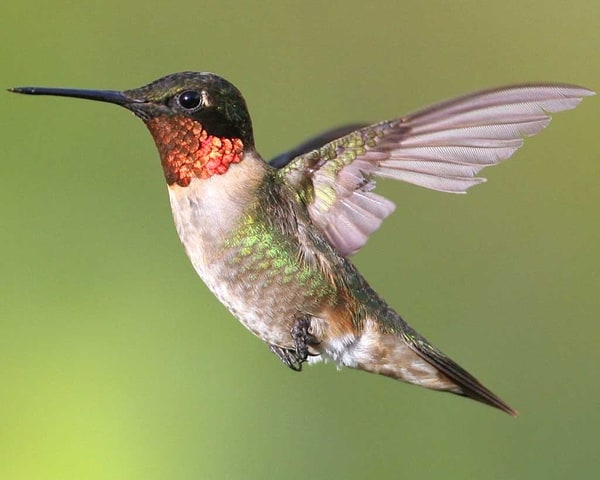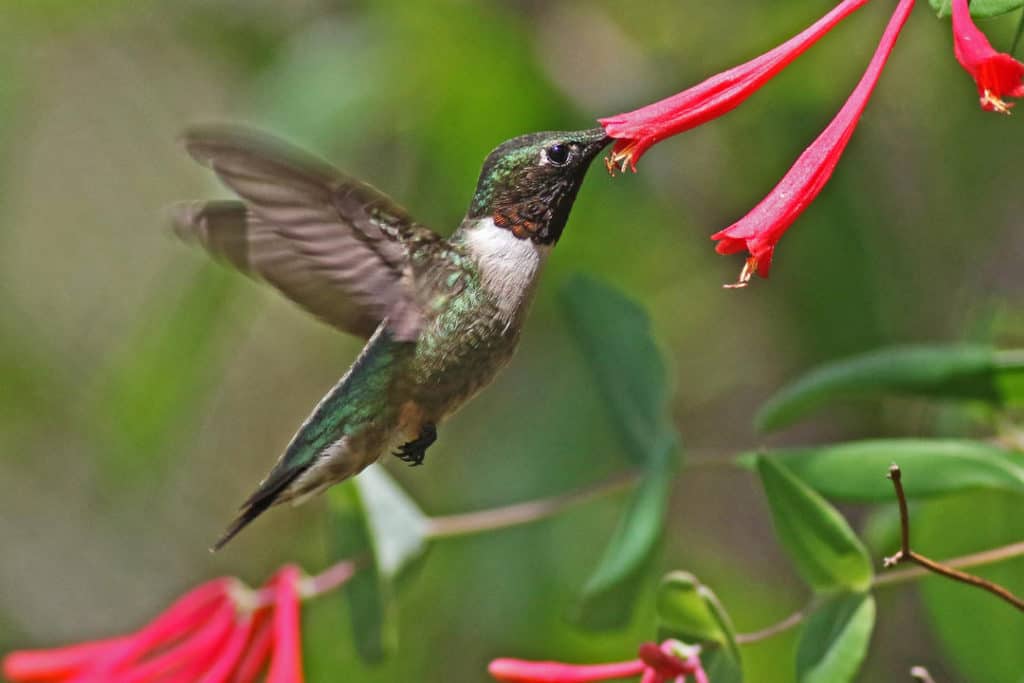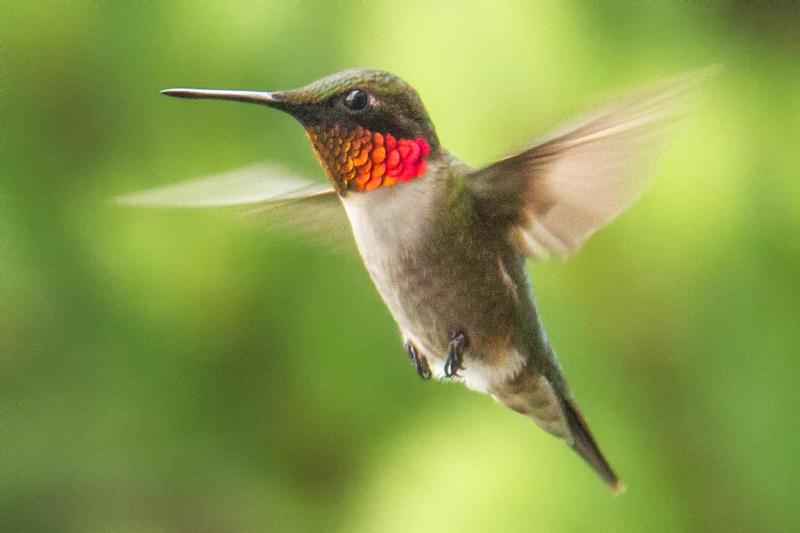Ruby-Throated Hummingbirds

While wandering through your backyard flower garden or the Dismal Swamp, you are bound to spot a flash of green and red. The ruby-throated hummingbird is eastern North America’s sole breeding hummingbird. These brilliant, tiny, precision-flying creatures glitter like jewels in the full sun, then vanish with a zip toward the next nectar source. By early fall, these hummingbirds are bound for Central America, with many crossing the Gulf of Mexico in a single flight!
Ruby-throated hummingbirds are capable of beating their wings more than 50 times a second. It’s possible to hear the beat of the wings, which make a humming sound, hence the bird’s name. These hummingbirds are very small, growing only 3.5 inches tall and weighing less than a quarter of an ounce. Male and female hummingbirds look very similar, except for one large difference: males have a ruby throat and the females have a white throat. They both have a metallic green head, back, sides, wings, and tail, and a white chest and belly.

Hummingbirds use their long, needle-like bill to eat nectar from red or orange flowers such as salvia, creeper and honeysuckle. They will gladly feed from backyard hummingbird feeders, which the birds may make part of their territory. When a ruby-throated hummingbird marks its territory, it will defend it against all potential enemies, including other birds, insects and small mammals.
The nest of this hummingbird is very delicate and takes 6 to 10 days to build atop a branch. Made of grasses and plant fibers, and held together with spider silk, the tiny nest is only the size of thimble. Eggs incubate for about two weeks, with young hummingbirds flying only 20 days after hatching. Male hummingbirds do not stick around long. Pairs are together long enough for courtship and mating, which is usually a few days or weeks.

Remember to fill your hummingbird feeders and prepare your garden with red or orange flowers to attract these lovely hummers at the first sign of spring!
Sources & Images:
https://www.audubon.org/field-guide/bird/ruby-throated-hummingbird
